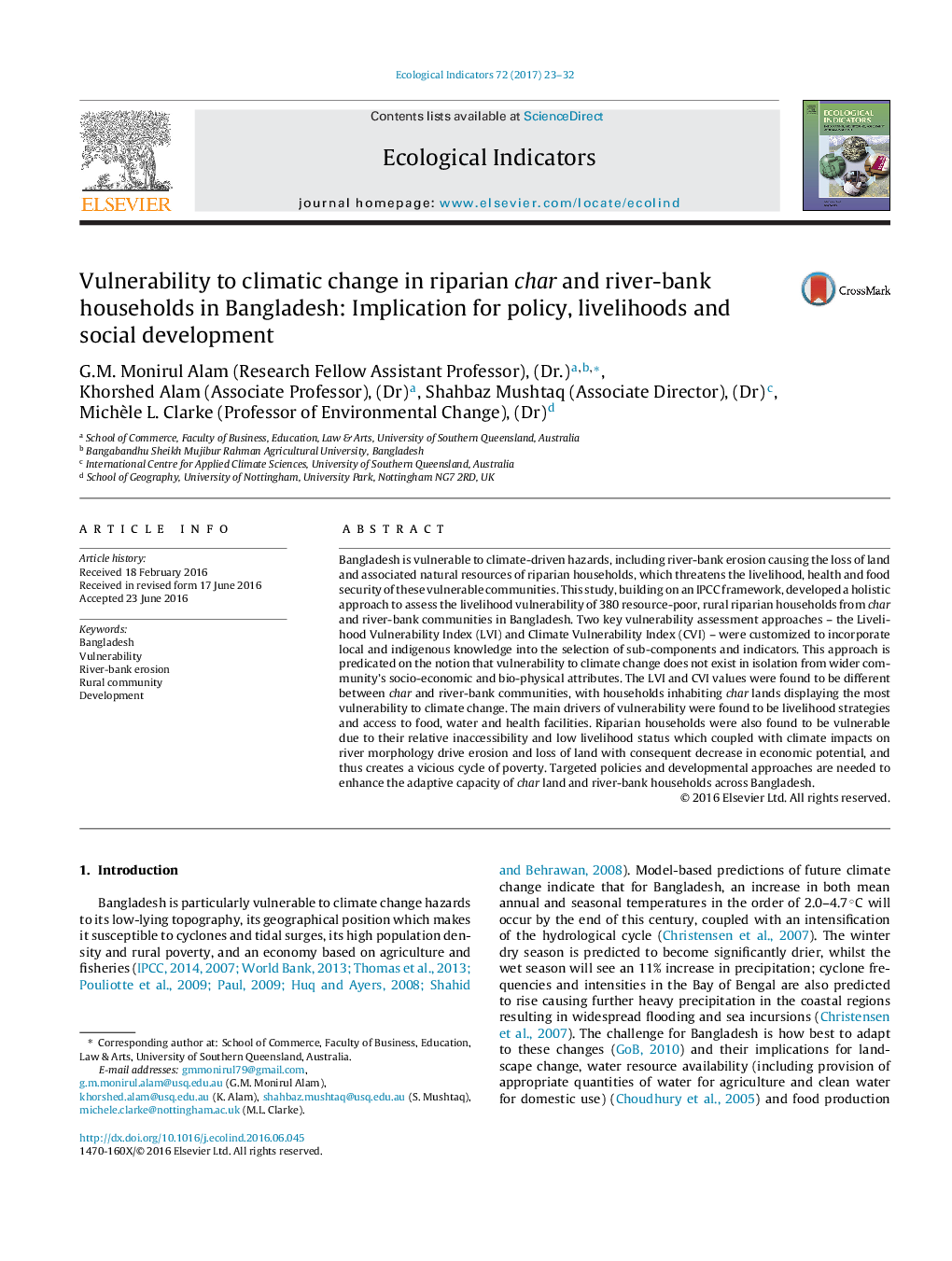| Article ID | Journal | Published Year | Pages | File Type |
|---|---|---|---|---|
| 6292710 | Ecological Indicators | 2017 | 10 Pages |
Abstract
Bangladesh is vulnerable to climate-driven hazards, including river-bank erosion causing the loss of land and associated natural resources of riparian households, which threatens the livelihood, health and food security of these vulnerable communities. This study, building on an IPCC framework, developed a holistic approach to assess the livelihood vulnerability of 380 resource-poor, rural riparian households from char and river-bank communities in Bangladesh. Two key vulnerability assessment approaches - the Livelihood Vulnerability Index (LVI) and Climate Vulnerability Index (CVI) - were customized to incorporate local and indigenous knowledge into the selection of sub-components and indicators. This approach is predicated on the notion that vulnerability to climate change does not exist in isolation from wider community's socio-economic and bio-physical attributes. The LVI and CVI values were found to be different between char and river-bank communities, with households inhabiting char lands displaying the most vulnerability to climate change. The main drivers of vulnerability were found to be livelihood strategies and access to food, water and health facilities. Riparian households were also found to be vulnerable due to their relative inaccessibility and low livelihood status which coupled with climate impacts on river morphology drive erosion and loss of land with consequent decrease in economic potential, and thus creates a vicious cycle of poverty. Targeted policies and developmental approaches are needed to enhance the adaptive capacity of char land and river-bank households across Bangladesh.
Related Topics
Life Sciences
Agricultural and Biological Sciences
Ecology, Evolution, Behavior and Systematics
Authors
G.M. (Dr.), Khorshed (Dr), Shahbaz (Dr), Michèle L. (Dr),
